Infrared heaters are normally used to provide specific, targeted heating. Got a cold spot in your home? An infrared panel heater can do a great job. Want to be warmer working from your home office? An infrared heater will provide direct heat all day long and cost around 6p an hour to run!
But in the right home environment, could this IR technology be ramped up to replace a traditional central heating system? After all, infrared heaters are efficient, cost-effective and can run off renewable electricity.
It’s a good question and one we’re going to look at in this article.
Can infrared heating work like a traditional central heating system?
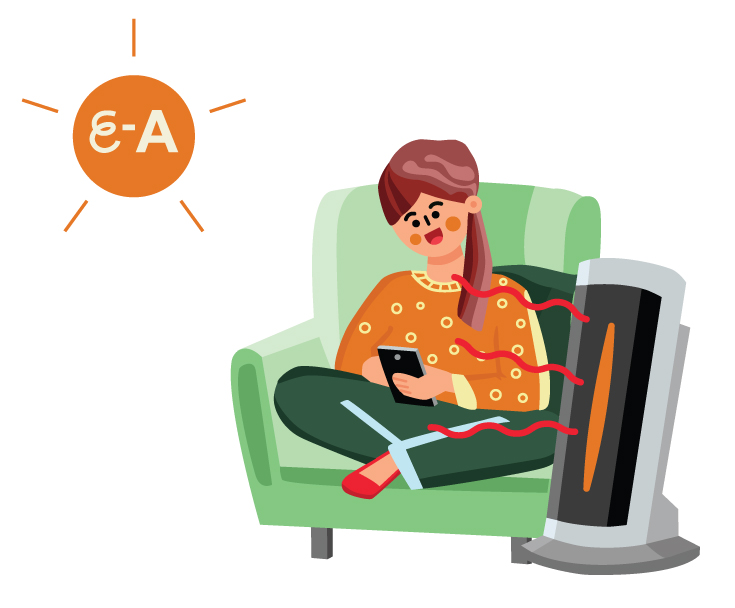
Most people are creatures of comfort. They like what they know and know what they like. And when it comes to heating, people like to feel warm and comfortable.
With a traditional gas-fired central heating system, people are warmed up via the air – hot water flows around your central heating system, radiators warm up, heat is given off (mainly by convection) and the air is warmed. As more and more air is heated, you start to feel warmer.
Infrared heaters don’t work like this. Instead of heating the air through convection, infrared panels emit radiant heat that warms people and objects directly.
In this way, infrared heating is very different from traditional central heating. In fact, infrared isn’t really classed as a central heating system in the traditional sense, but it can do the job of warming people up as and when is needed.
A well-designed infrared heating system, with panels strategically placed throughout the home, can create the same effect as traditional central heating. With proper installation, the right technology and set up, infrared systems can heat homes comfortably and effectively.
However, it’s a different type of heat and warming experience from traditional central heating. This may take a bit of getting used to for those living in an IR heated home full time.
For a more familiar experience of hot water fed radiators, heat pumps are much closer to standard central heating systems in the way they work. You can also have a read of this article on heat pumps vs infrared panels.
How do infrared panels provide effective and efficient heat?
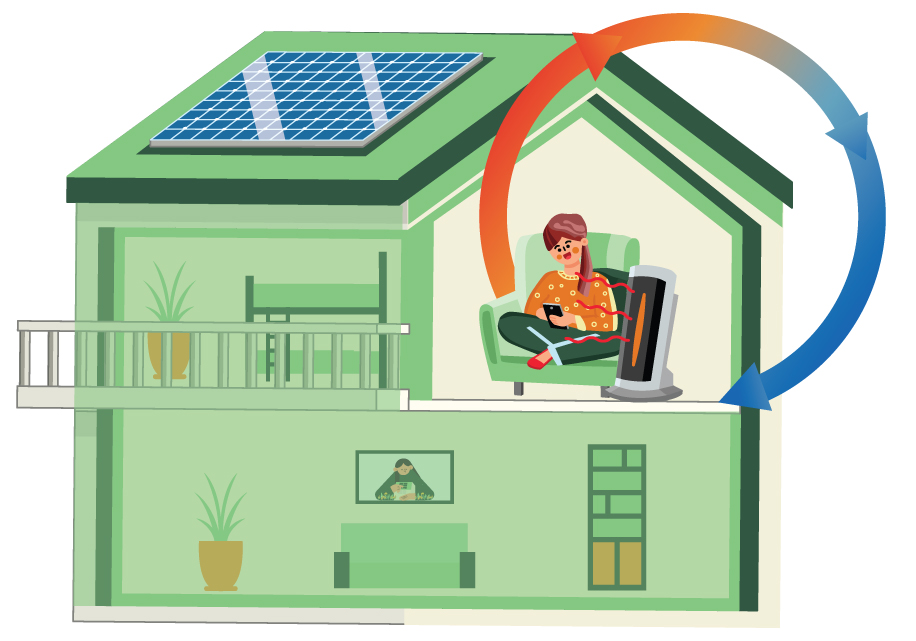
Infrared panels work by emitting electromagnetic waves that transfer energy directly to objects and individuals in a room. This direct heating method can reduce heat loss associated with convection systems, where warm air often escapes through windows, doors or poorly insulated walls.
Instead, the radiant heat warms objects and people straight away, providing a consistent and comfortable warmth. Just think of the feeling when you step out into direct sunlight – that’s similar to the type of warmth IR heaters provide.
It’s also said that infrared panels help maintain healthier air quality by avoiding the circulation of dust and other particles that can be stirred up by convection-based heating systems. They can also reduce issues like dampness and mould by warming the building fabric itself to prevent moisture buildup.
Connecting up smart infrared heating
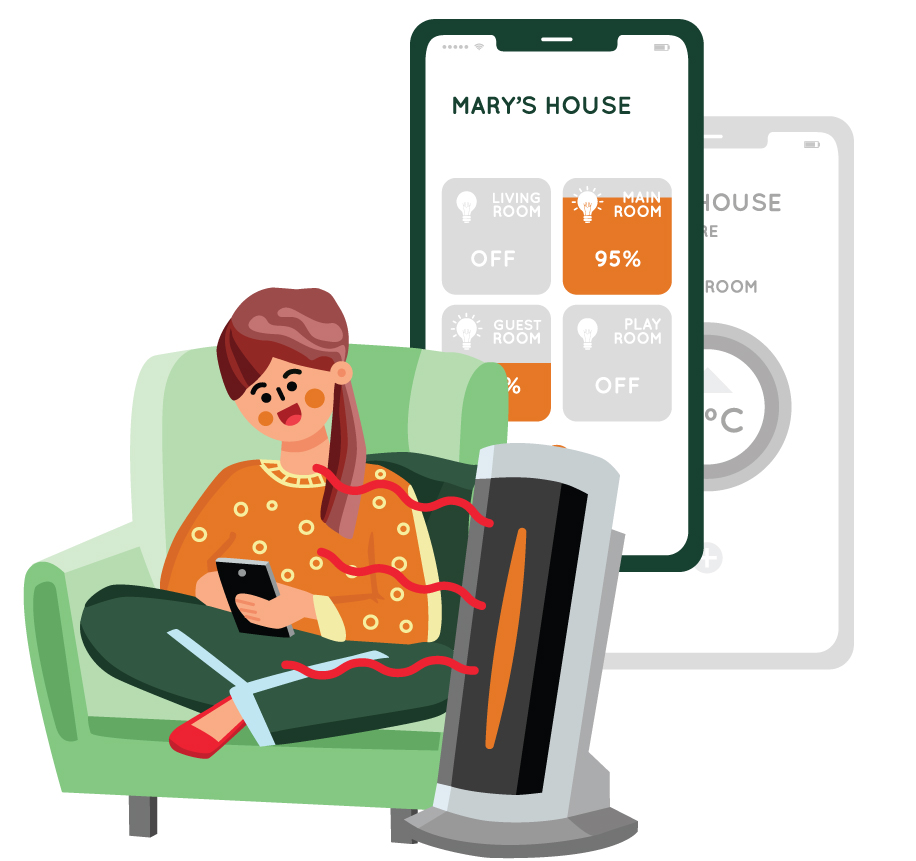
Infrared panels operate independently. This makes them slightly different to a central-heating system where all radiators are connected, although you can adjust individual radiators of course.
However, a big advantage of modern infrared heating systems is their integration with smart home technology. Connecting them all to a central place helps them to function like a true infrared central heating system.
Apps like Smart Life and Tuya help homeowners to control their panels remotely, enabling them to schedule temperatures, set timers and monitor energy usage all from their smartphones or tablets. This level of customisation makes sure that heating is only used when needed, which maximises efficiency and energy savings.
To do this, infrared panels need to be smart or Wi-Fi enabled. Many panels also support voice control via Amazon Alexa or Google Assistant, allowing you to make real-time adjustments with simple commands. With these features, infrared heating offers a greater level of detailed control than normal central heating systems.
Take a look at some of the best Wifi-enabled infrared panels on the market.
Advantages of using infrared heating
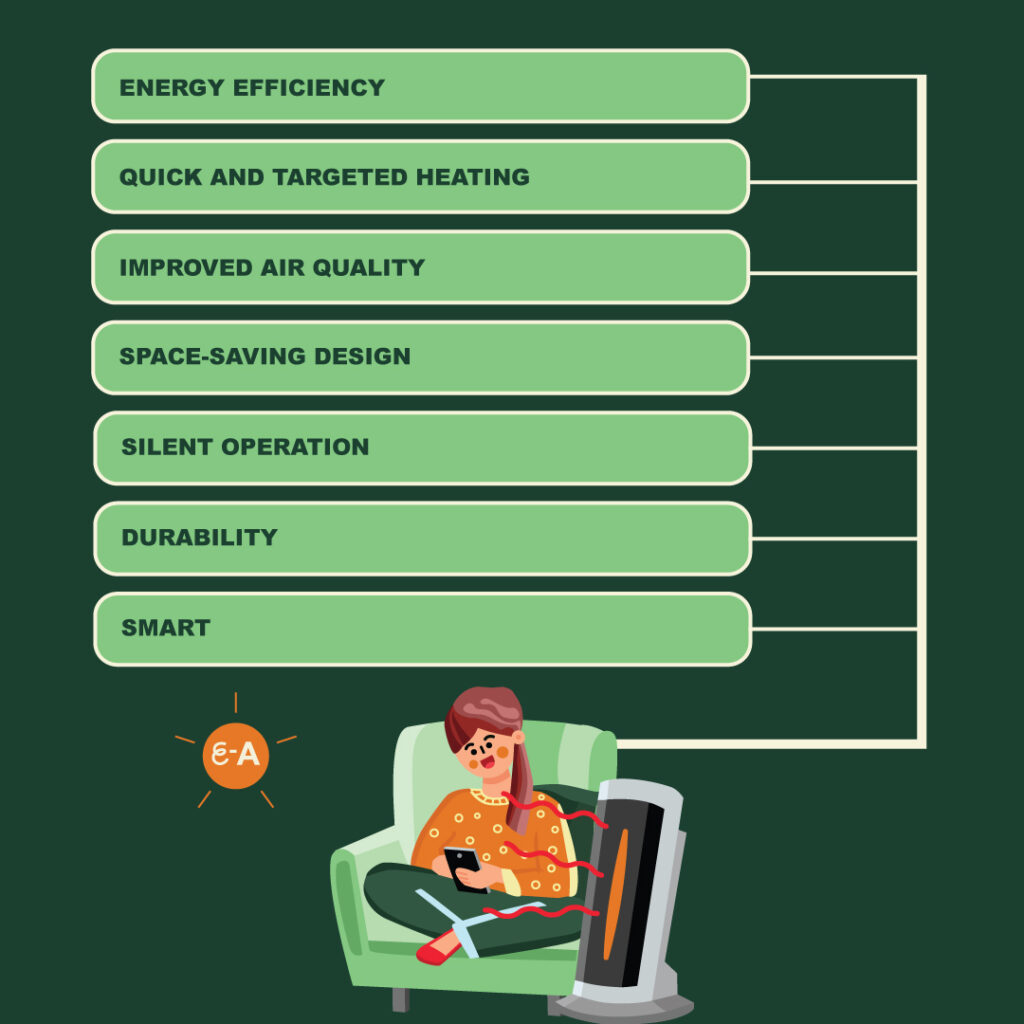
- Energy efficiency – Infrared panels convert nearly all the electricity they use into heat, making them one of the most efficient heating solutions available. Some panels are 100% efficient. Gas-fired radiators are between 80-94% efficient. Read more on infrared panels vs radiators.
- Quick and targeted heating – Panels provide almost instant warmth, so there’s no need for long pre-heating times. This is ideal for busy households.
- Improved air quality – By not circulating air, infrared heating avoids stirring up particles and dust to promote a cleaner internal environment.
- Space-saving design – Panels are slim and can be mounted on walls or ceilings, freeing up valuable floor/wall space where a traditional radiator would be positioned.
- Silent operation – Infrared panels work without noise.
- Durability – With no moving parts, infrared panels are highly durable and require little to no maintenance. They can last for 20 years and more.
- Smart – Smart IR heaters can be scheduled precisely in terms of temperature and time. Even more, intelligent systems have sensors and thermostats in each room that can turn the panels on and off automatically to save energy.
You can learn more about the advantages and disadvantages of infrared panels here.
Installation and costs of infrared central heating

Installing infrared panels is generally straightforward. Panels can be mounted on walls or ceilings, with many models offering a plug-and-play option that requires only a standard electrical socket. For more permanent installations, it may be best to get a qualified electrician to hardwire your panels in so there are no dangling wires into plug sockets.
The cost of infrared panels varies depending on their size and brand. Smaller panels (around 300W) cost between £150-£250, whilst larger panels (up to 800W) range from £300-£500. For a standard home, fitting out multiple rooms could cost anywhere from £2,000-£5,000 – this of course depends on the number of panels required and the complexity of installation.
These prices are somewhat comparable to a new boiler that doesn’t need any new radiators.
For IR heating costs, determining how many panels you need is key. This takes a little bit of doing but it is possible to estimate this yourself. You need to consider two main factors:
- Volume of the room (length × width × height)
- Insulation quality
A moderately insulated home requires around 25 watts per cubic meter. For example, a room needing 1,000 watts of heating could use one large panel or two smaller ones for better heat distribution.
Whilst the upfront cost of infrared panels to create a central heating system may be higher than traditional heating systems, their efficiency and low running costs often result in savings over time.
Is infrared central heating cheaper to run than gas central heating?
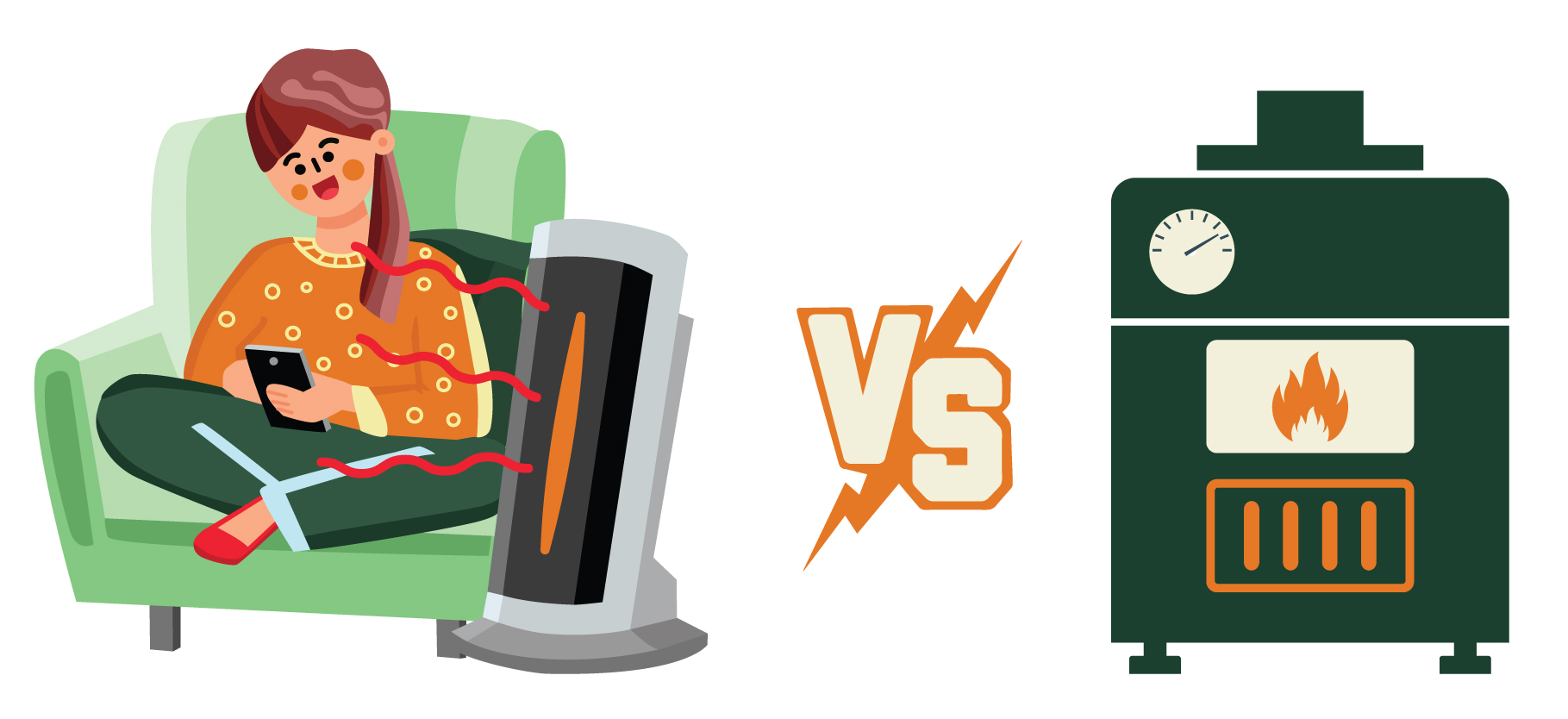
Infrared heating systems can be more cost-effective to run than gas central heating, especially in well-insulated homes.
For example, a 600W infrared panel costs approximately 14-15p per hour to run, based on the UK’s average electricity price of 24.5p per kWh.
For a standard home using infrared heating for six hours a day, the estimated daily cost is around 90p-£1.50 per panel. You’ll then multiply this up by how many panels you have. These costs, however, all depend on how long the panels are turned on for. The smarter your system, the less time the panels will have to be used for. A 600W panel used for 2 hours a day will cost less than £10 a month to run.
In contrast, running a gas boiler for multiple hours a day will come in around £5-10 per day. Again this all depends on what temperature the water flow is set to, how high the thermostat is, how many radiators in the house, how well insulated the house is and other factors.
Smart controls improve cost savings by allowing precise management of heating schedules and temperatures. Homeowners can make sure that panels are only heating occupied spaces, reducing unnecessary energy use and optimising your running costs.
Will infrared heating systems heat the whole house?
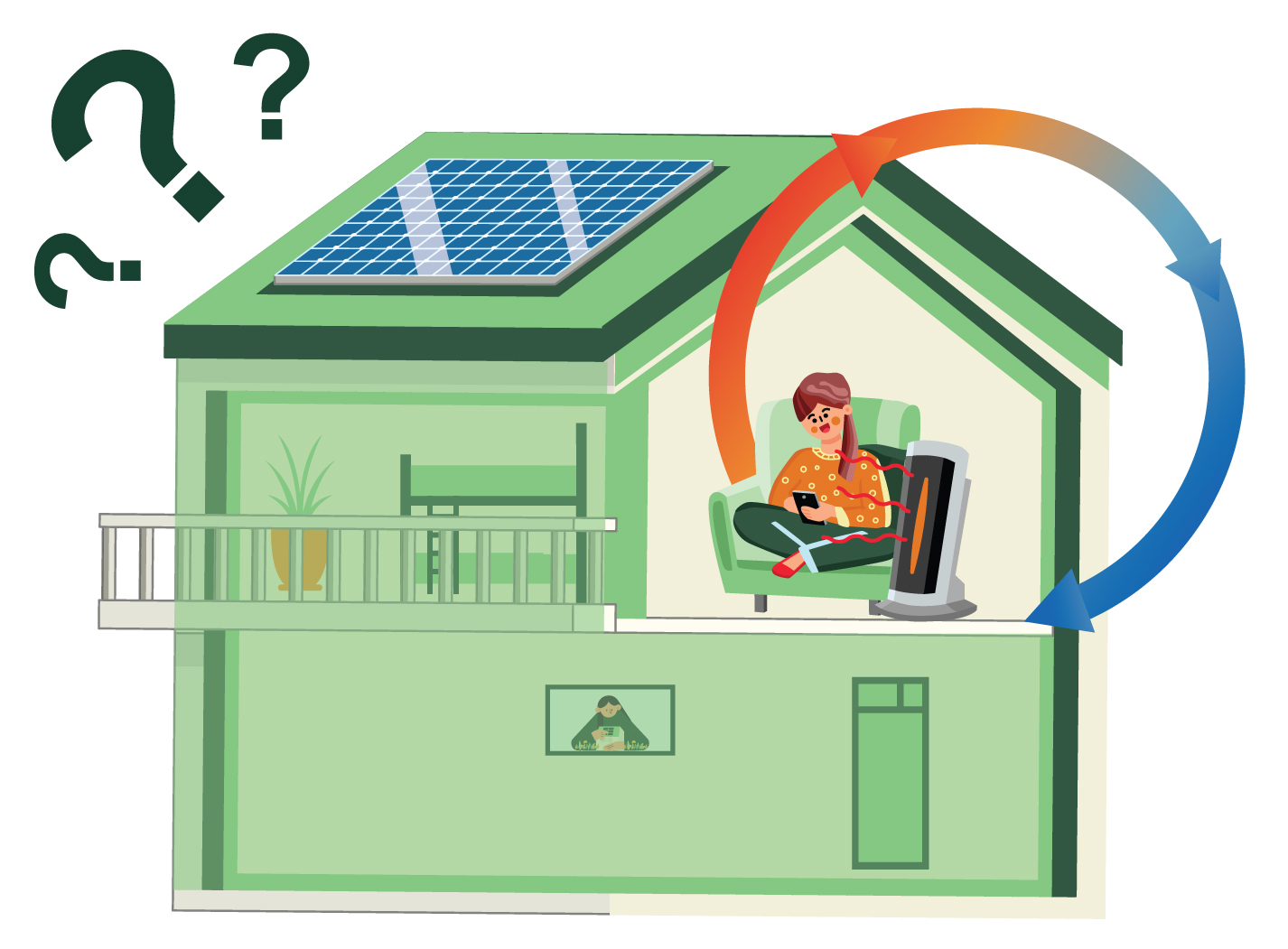
They certainly can do, but you’ll need a well-designed infrared heating system to effectively heat an entire house.
The key lies in proper planning and panel placement. By calculating the heating needs of each room and distributing panels accordingly, you can get consistent warmth throughout your home.
You’ll need a good number of IR panels to achieve this. For example, a 3-bedroom house in the UK may need around 10-12 panels to heat the space properly. In this example, smaller bedrooms might need one 300W-400W panel each, whilst larger spaces like a living room or kitchen might require 600W-800W panels.
If you’re going with IR panels alone, you’ll need super insulation levels and airtightness to make your home a comfortable place to be. Read more on how many IR panels do you need.
Can Infrared Heating Systems Be Combined with Other Heating Solutions?
Infrared heating systems can work alongside other electric heating solutions to create hybrid systems.
For example, IR panels can be used to supplement electric radiators throughout a home to provide well-rounded targeted heat. This combination works particularly well for homeowners who are phasing out gas systems entirely and transitioning to all-electric solutions.
Infrared heating also pairs effectively with heat pumps. Whilst heat pumps can efficiently maintain a base level of warmth throughout a home, infrared panels can provide additional localised heat in areas that may need extra warmth, such as living rooms or kitchens. This may be useful on certain occasions as heat pumps take a little longer to warm a room than traditional radiators because of their lower flow temperature.
Most of the time, infrared heating is used as a supplementary heat source that’s paired with other heating systems. Thinking forward, an all-electric system combining these technologies creates a sustainable, flexible and energy efficient home.

